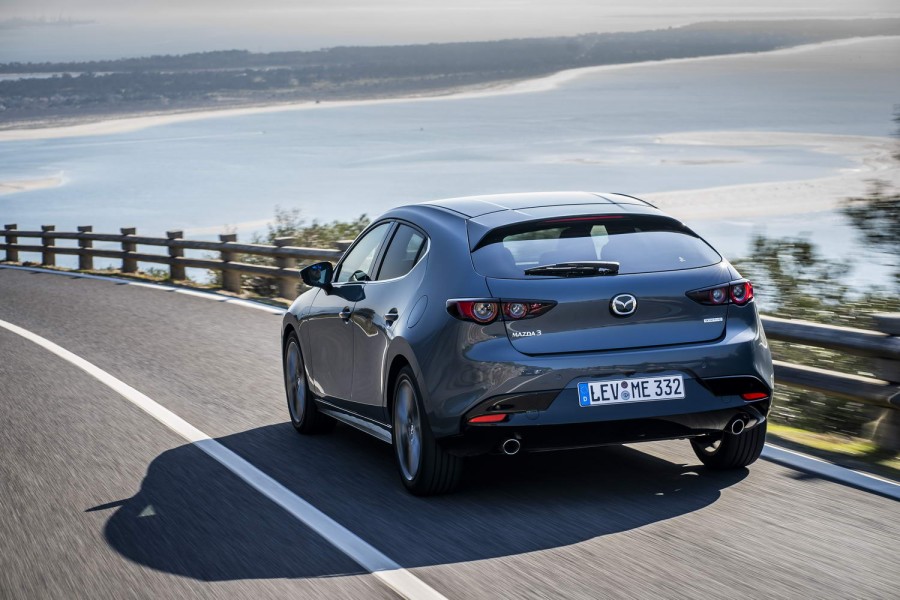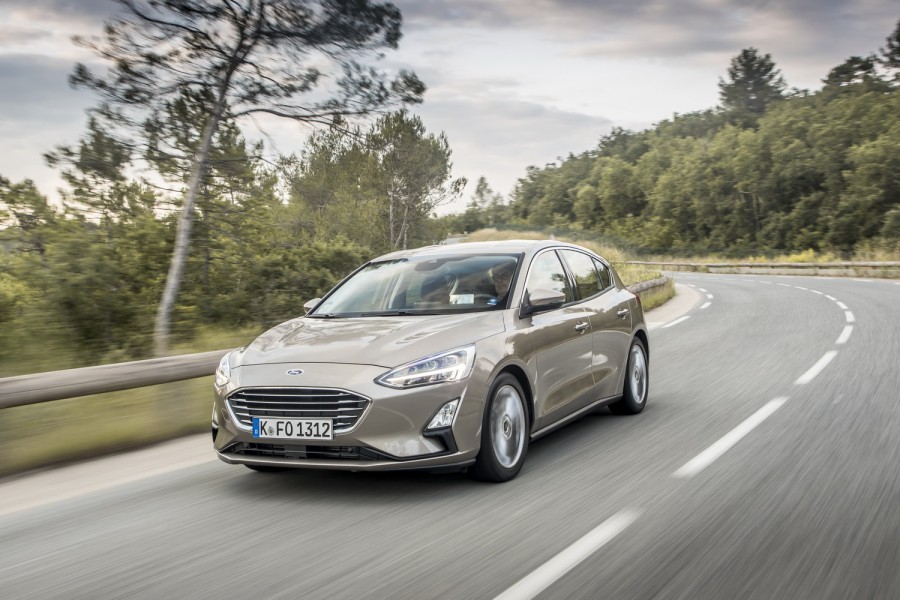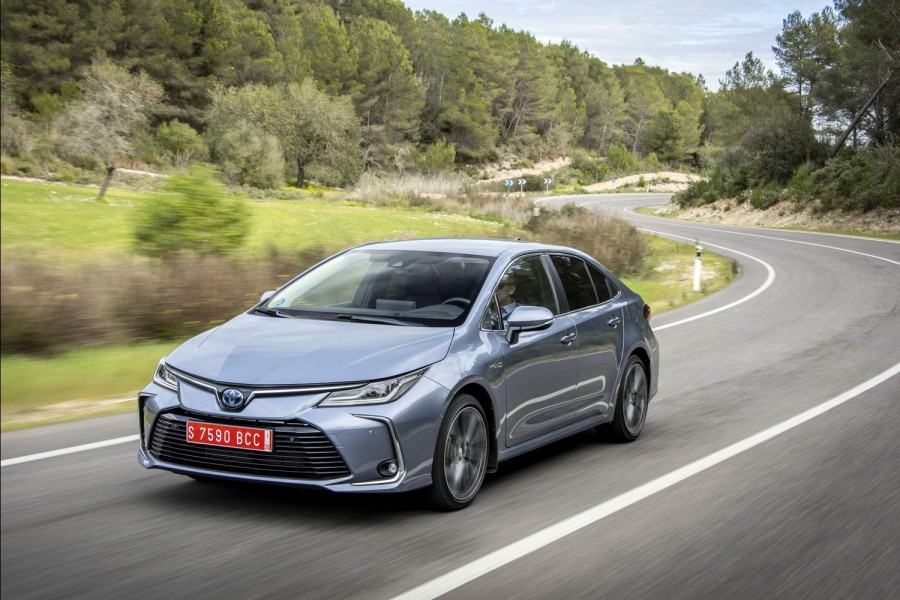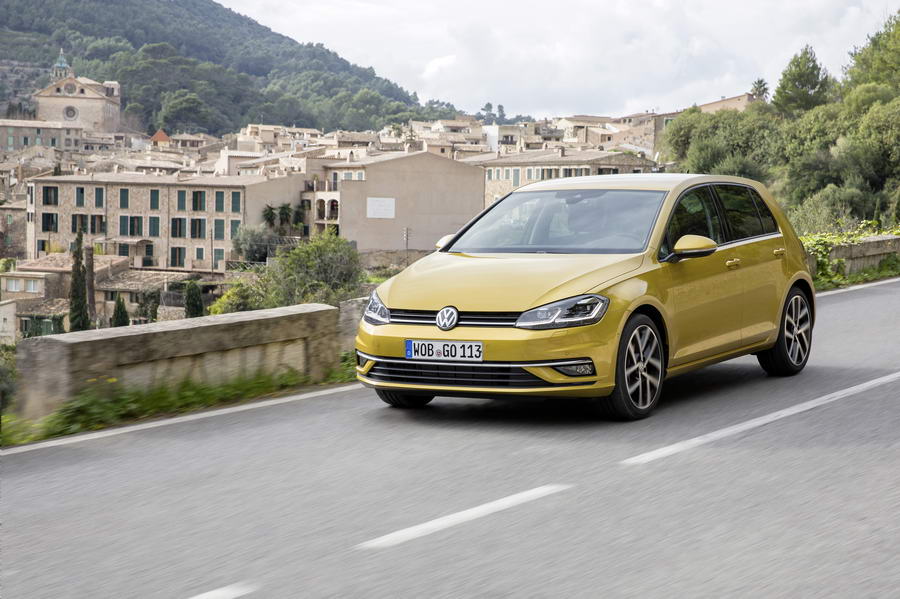Mazda's simple M-Hybrid system isn't as effective around town as Toyota's more complex full hybrid setup, but for many it will make this 2.0-litre petrol version of the new Mazda3 a viable alternative to diesel power.
In the metal
We've blathered on quite a bit already about how good the Mazda3 looks in our review of the 1.8 SkyActiv-D diesel model, but it bears repeating here that we're dealing with Derek Zoolander levels of handsomeness. Maybe even Hansel levels (he's so hot right now). The 3 looks smart as a four-door saloon, but far, far better as a five-door hatch. That curving, almost c-shaped, beetle-backed rear end is just far more visually interesting than the backside of most family hatchbacks (even if it doesn't do much for over-the-shoulder visibility) and the pared-back styling of the rest of the car - thankfully bereft of needless lines and slashes - is more like a Range Rover Velar in its tastefulness than it is like that of any rival hatch. The Mazda3 easily lifts the best-looking hatch crown from the previous holder, the Renault Megane.
The cabin is just lovely too - well made, neatly laid-out and made with what Mazda describes as 'Japanese Takumi craftsmanship.' The only other car maker that talks about Takumi (an ancient Japanese word meaning 'artisan') is Lexus, and that's the kind of level of quality, fit and finish you'll find in the 3's cabin. Mazda has even gone to the trouble of designing seats that hold you in place with your pelvis held upright (cue Carry On jokes) and your spine lightly curved, which is apparently the best way for your body to deal with bumps and other vertical movements. Whatever, they're super-comfy and look good too.
Driving it
It takes a few minutes, and several corners, to get your head around how to get the best out of Mazda's 2.0-litre SkyActiv-G engine. We've become so used to the easy-access power that comes from light-pressure turbocharging that we've sort of forgotten that to get the best from a naturally aspirated engine, you need to build up the revs, and keep them there. That means a little more concentration if you're giving the Mazda3 a good lash over tight and twisty mountain roads (yes, that was us) and more working at the six-speed gearshift. Which is slightly more of a chore than it usually is in a Mazda - the shift seems to have become longer of throw and require a bit more movement across the gate. It's not bad, as such, but not as snappy and MX-5-like as we've become used to.
Get the gearshifts right, though, and the 3 is a delight to drive. Refinement, of all kinds, is genuinely impressive (you'll rarely need the stereo at more than one third volume in most driving conditions and tyre noise is especially well suppressed), but what engine noises do come through reveal a pleasantly gruff, zingy soundtrack. Torque is short (maxing out at 213Nm) so you have to run the engine way up the rev range in the lower gears.
Do that, and the 3 impresses by being able to keep up its momentum. The standard-fit 'G-Vectoring Control Plus' system tweaks the engine's torque outputs and dabs individual brakes to smooth out your steering inputs both on the way into and out of a corner, and the 3 has a mesmerising ability to find more front-end grip in the middle of a tight corner, taken with slightly too optimistic a throttle opening, than you would think possible for a humble family hatch. And that's despite the cheap-o torsion bar rear suspension, which makes its presence felt with a slightly rumbly and pattering ride quality on poor surfaces.
The hybrid system isn't as obvious as that deployed by Toyota. While there is an electric motor, it's not a separate motor that can drive the car under pure electric power. Rather, it's an integrated starter generator (ISG), attached directly to the engine, which can feed its 6kW of energy into the powertrain when needed. That can be either to boost acceleration a little, or simply to cover torque gaps in the power delivery when you're changing gear, which makes the shift feel that much smoother. Or it can, drawing power from its little lithium-ion battery mounted under the back seat, run the car's advanced stop-start system and the engine's cylinder shut-down system to help save fuel.
It seems to work, too. Driven with vigour, the 2.0-litre engine used 7.5 litres per 100km in our hands, which isn't too shabby. Driven rather more gently, that consumption fell to more like 6.0 litres per 100km, which is impressive.
What you get for your money
Price-wise, Mazda is clearly aiming the 3 right at the new Toyota Corolla, with a starting price of €26,295. That’s a little steep, for a family hatchback, but the upside is that there’s a lot of standard equipment. That includes such safety kit as radar assisted cruise control, blind spot monitor, and rear cross traffic alert, as well as LED headlights, the big 8.8-inch infotainment screen, an a heads-up display. Our high-spec GT Sport test car also came with a seriously impressive Bose stereo.
More interesting will be whether buyers will take to a large, naturally aspirated engine in a family hatchback. Mazda Ireland says that its dealers already have experience of convincing people of the merits of the big-engine: small-car equation, and Mazda's engineers at HQ are confident that if people test drive the SkyActiv-G engine and see what it can do, they'll be convinced. While diesel still plays a big part for Mazda Ireland outside of the major urban centres (country buyers still like their black pump, it seems) the petrol 3 has some work to do - it's expected to account for 65 per cent of Irish Mazda3 sales. "If people sit in the car, and the car behaves the way they expect it to, then there's not a problem" Christian Schultze, Mazda Europe's head of technical research, told CompleteCar.ie.
Summary
It's very hard indeed not to be beguiled by the new Mazda3. Hitting you right off the bat with that styling is almost unfair, but thankfully the 2.0-litre petrol engine - much improved with the addition of the mild hybrid system - lives up to the billing, and the 3 is sweet to drive to boot.























































